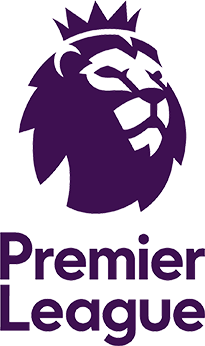- Founded 1992 (33 years ago)
- Region England
- Number of teams 20
- Dates of the event Yearly (August - May)
- Current champion
 Manchester City
Manchester City - Qualifier for UEFA Champions League, UEFA Europa League
- Most successful club
 Manchester United
Manchester United - Website https://www.premierleague.com
General information
Premier League: The Youngsters at the Top
Coming from a darker and seemingly fruitless background, this league came out as survivors. The youngster among the group, Premier League was formed only in 1992, after a decision to break away from England’s Football League. This lucky break would only be the beginning, with the following years showing much success for the newly formed association.
Now, it’s a part of the ‘top 4 leagues’ club and also one of the most popular in the world, giving Europe’s powerhouses a run for their money. EPL is the top football organization when it comes to revenue, dominating the broadcasting systems as the most-watched league to date. Let’s take a look at its interesting history, explain some of its rules, and learn about the foundation’s trophies and rewards.
History
The Premier League took its roots from the British First Division of the Football League, a professional football association that emerged in 1888. Prior to its creation, British football was going through hard times, suffering from low popularity and poor attendance due to the notorious behavior of English football fans.
The deadly Heysel Stadium disaster that occurred in 1985 resulted in a ban for the English clubs to participate in the European competitions, also contributing to the downfall of national football.
The idea to create a top-tier association comprised of the best-performing clubs emerged in 1990, initially proposed as a chance for the British football giants to gain a larger share of football broadcasting revenues by breaking up with the EFL and establishing an independent league. At the onset, the League was comprised of 22 clubs – 2 more than there are now.
Teams of Manchester and Liverpool would dominate along with Arsenal for the first 10 years. Of the original top 4, Manchester United still remains, winning the highest number of recent championships and holding the record for the largest number of wins (13), which is almost three times higher than Chelsea’s record (5). However, Manchester City recently took the lead as the league’s champion and outscored the traditional champions such as MU and Chelsea in the past two seasons (2017/18 and 2018/19).
At the moment, the Premier League represents the top tier of the English league system, followed by Championship (tier 2), League One (tier 3), and League Two (tier 4) – all being part of the English Football League (EFL). Tier 5 of the UK league structure is occupied by the National League, while the sixth, last tier is the National Leagues North and South.
Format and rules
Premier League Format and Rules
The Premier League has a total of 20 teams, all of which meet each other 2 times during the season lasting from August to May. It follows a double round-robin system, allowing each team to play against every other team at home and away.
For a total of 380 games, a standard points system is used to determine the team qualifying for the win. Points given for the match outcomes equal 3 points for wins, 1 point to each side in the event of a draw, and 0 points for defeats. At the end of the season, totals are run, earning the top scorers a spot in the championship. In case of a tie, the total number of goals in the season is calculated and used as a tiebreaker.
Traditionally, only English clubs participate in the Premier League, with the only exception of Welsh teams that took part in several seasons. Scottish and Irish clubs are still excluded, though the rumors about their participation (e.g., the leading Scottish clubs Celtic and Rangers) are frequent.
The Premier League also poses certain limitations on the recruitment of foreign players by the member clubs. In response to many clubs’ abuse of the foreign recruitment (e.g., Arsenal’s full staffing of the club with foreign players in 2001), the League’s administration now requires the clubs to hold at least 8 positions out of 25 for players from England.
Trophies and awards
The Premier League Trophy was designed and created by Asprey of London, the jewelry company working for the Royal family. The trophy has a golden crown and stands on the malachite plinth base.
The Premier League owns the original trophy (held by the team during its active championship) and a replica for the times when two teams turn out to be the champions based on the season’s results. There is also a separate version made especially for Arsenal after its spectacular performance in the 2003/2004 season, grabbing the title without a single defeat.
Throughout the season, awards are given out to managers and players, some on a monthly basis, and some – per season. The top performers are awarded the titles like Manager of the Month or Goal of the Month, with the most prestigious being Golden Boot and Golden Glove.
In order to increase the team’s moral spirit, the Man of the Match award is also given, with the league aiming to award the player that kept the team pumped up and going throughout the entire match series. Special medallions are also awarded to players upon achieving certain milestones, such as playing in 100 matches, hitting 50 goals, etc.
Premier of Their Own
The Premier League is considered one of the top 5 national football associations today, currently coming behind only La Liga as per the official UEFA coefficients. Currently, it is the most-watched football league across the globe, while its revenue gap with the EFL is as high as 1000%. It’s no surprise, as the broadcasting rights for the league are sold to companies in over 180 countries.
Table of Contents




 Manchester City
Manchester City Manchester United
Manchester United